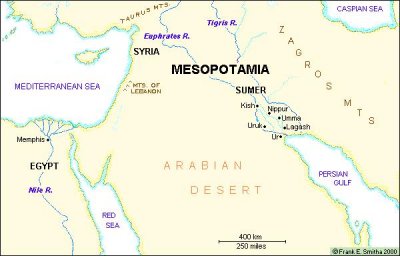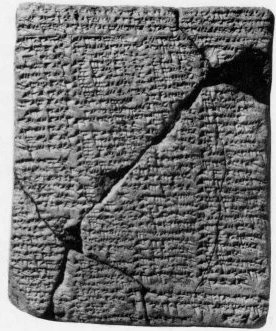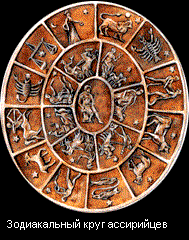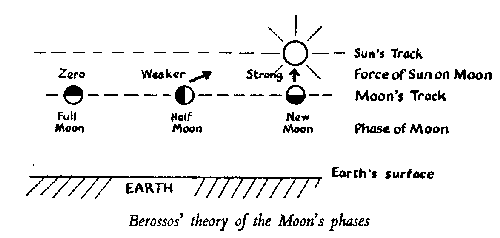|
Mesopotamian Astronomy |
|||
| Astronomy of Mesopotamia: Sumeria, Babylon, and Assyria
Astronomy began with the first settlements of agricultural societies. Mesopotamia, the land between the Tigris and Euphrates rivers in what is today Iraq, was the birthplace of civilization almost 10,000 years ago. It is in ancient Sumeria that we find the oldest records of the study of astronomy. Babylon and Assyria were later civilizations in the same geographic area, and inherited the Sumerians' astronomical traditions and many of their myths and legends surrounding the skies. They in turn developed their own astronomical culture and passed it on to the Greeks and eventually to our modern world. Perhaps the greatest legacy to modern western astronomy was left to us by the Babylonians. We still use many of their original constellations, and the records they kept of astronomical occurences allow us a glimpse into their view of the heavens.
Purposes of Astronomy in Ancient Mesopotamian Civilization As in most ancient cultures, astronomy was actually practiced as astrology. Astronomical events, whether they were every-day occurences or rare incidents, had a deep religious meaning for the people. It was believed that all things happened for a reason. This spiritual angle often spilled over onto the social or political levels as well. Kings and nobles relied heavily on omens which were witnessed and interpreted by a powerful group of priest-astronomers. Lives were lived according to the advice of these astronomers, who seemingly were able to understand the universe and make predications based on their observations. A great deal of astronomical mythology was handed down from the Sumerians. Constellations that we still use today, such as Leo, Taurus, Scorpius, Auriga, Gemini, Capricorn, and Sagittarius, were invented by the Sumerians and Babylonians between 2000-3000 B.C. These constellations had mythical origins, the stories of which are common throughout the western world. The Babylonians created a zodiac, which marked the twelve constellations that the sun, moon, and planets travel between during their movements through the sky. However, besides being the manifestation of legends, the constellations provided a practical use for the people of ancient Mesopotamia. Like in other societies, the orientation of the constellations was used to mark seasons for harvesting or sowing crops. Certain constellations were noted for their yearly rising or setting times, and provided an accurate clock by which time could be measured. The Babylonians kept written records of calendars used for planting. Babylonian Records Babylonians kept records on clay tablets using a type of writing called cuneiform. At first this was generally for business purposes, in order to keep track of financial transactions and inventories. Several cuneiform tablets have been found, however, that focus on more scientific topics. One notable example is the Venus Tablet of King Ammizaduga, pictured below, which demonstrates the scientific methodology used by the Babylonian astronomers. The main topic of this tablet is the appearance and disappearance of the planet Venus as it goes from being an evening star to a morning star. Based on the detailed astronomical patterns mentioned in this tablet, modern scientists were able to use computers to determine that the Venus tablet was probably written in the year 1581 B.C. Another astronomical cuneiform tablet was found in the tomb of King Ashurbanipal of Ninevah, and also details the times of Venus' appearance and disappearance from the horizon.
Scientific Breakthroughs The Babylonians not only recognized Venus as the same object whether it appeared in the morning or evening, but they actually developed a method for calculating the length of the Venus cycle! According to the Babylonians, the length of one cycle was 587 days, compared with the actual value of 584 days. The slight difference is due to the fact that they attempted to coincide these astronomical cycles with phases of the moon. Both the Babylonians and the Assyrians were able to predict lunar eclipses. They applied a simple method which made future predictions based on past observations. Several cuneiform tablets list series of lunar eclipses and mark time between successive events. One of the major breakthroughs of the Babylonians was their invention of the degree system to distinguish positions in the sky. The system was similar to our use of degrees to calculate latitude and longitude. The Greeks adopted the degree system and also many of the Babylonian constellations, which they renamed in Greek. REFERENCES FOR THIS PAGE: Anthony Aveni, Stairways to the Stars, John Wiley & Sons, 1997. J. Norman Lockyer, The Dawn of Astronomy, MIT Press, 1894. |
|||
| Mesopotamian Astronomy
(from a Russian Source) Blossom of Mesopotamian astronomy falls on the I thousand of years
B.C. In 612 B.C. the capital of Assiria (Ninevia) was ruined by the babylonian
troops. Later an archaeologists found a lot of earthenware "books" of assirians
priest-astronomers in the ruins of the palace of the last assirian tsar
Ashurbanipal. There was a result of all forecoming development of astronomy.
Apart from catalogue of stars and constellations and their morningrise
data list those "books" included a list of" constellation in the Moon way",
that is 18 constellations - a prototype of modern zodiac.
Messopotamia was covered by the net of temples, where they carried astronomical investigations. From the VIII-th century B.C. astronomers began to registrate the dates of observed Moon eclipses in special lists. Just the knowledge about ancient eclipses allowed Gipparch, Ptolemei and Copernic calculate with more accuracy the year duration. These ancient scientists observations are actual even nowadays but there is understandment of lack of accuracy in their measurement in detecting distance between the Sun and the "basic" stars. There main astronomical tool was a water watch. Mesopotamian astronomers divided a day (24 hours) into 12 hours and every hour was divided into 30 "time degrees". One time degree had four our minutes. Zodiac circle of assiriansThe most outstanding achievement of mesopotamian astronomy became the development of mathematic theory, helped to foremeasure the Moon and the planet moving with exactness enough for the naked eyed measurements. During this epoch on a basis of long time observations it was discovered saros (Greek "repetition") i.e. 18-year period of the repeated Moon eclipses. It was also found the periodical law-governed nature of the planet movement. The classical scientists used the achievements of mesopotamian science. |
|||
| Ancient Mesopotamian Astronomy
Crude Celestial Concepts
In any case, to be honest, we do not know for certain whether the
astronomers had any theoretical
One of the rare pieces of evidence, and a very indirect one at that,
is contained in the following
Berrossos, who came from the city or nation of the Chaldeans and
expounded Babylonian science in
The globe of the Moon is luminous on one hemisphere, the other half
being dark blue in color.
When, moving on, the Moon travels towards the eastern parts of the
sky, the action of the Sun on it
This explanation ignores half a dozen theoretical advances made by
Greek thinkers in the two
‘open gates on both sides
we can understand Berossos' theory. But, to a Greek, it must have seemed terribly crude. |
|||
| Copyright Notice
All pictures and photos on this page, unless otherwise noted, have been gathered from pubic domain sources or are available under GNU License. Further documentation is available on our Copyright Page and our Legal Department. Article Quotes all have links to their appropriate source and are noted. All other text not so noted is available under the terms of the GNU Free Documentation License All information on this page is used only for non profit educational purposes. All reasonable attempts have been made that no credits are missed, but with a work of this size omissions may occur. If you see anything of yours that has not been properly credited or wish to have removed please contact the Webmaster |




